Breastfeeding can be the most confusing and confounding part of new motherhood. What’s latching? What’s cluster feeding? And what on earth is the koala hold? At Elvie we’re keen on breaking down difficult questions with simple answers. So read on to find out the different breastfeeding positions and which might be right for you. And remember, there are lots of different ways to breastfeed and there’s not one position or way that’s right or wrong. You do you.
The 3 most popular breastfeeding positions
You’ve probably heard of the cradle hold, the football hold, and the laid-back position, as they’re typically the most popular breastfeeding positions for new moms, but let’s explore these positions a little more and discover why they’re the most common techniques.
Cradle hold
Most of us would do anything for an easy life, right? This is why the cradle hold is the most popular breastfeeding position, especially if you’re breastfeeding in public. It’s a simple and generally comfortable position that you can use in a comfy armchair or on your bed with a load of pillows around. However, the cradle hold isn’t a great position if you've had a cesarean, because your baby will be across your tummy near the scar.
How to do the cradle hold:
Sit upright in a chair or at the head of your bed, placing a cushion or pillow behind you.
Lie your baby across your lap, facing you. You may wish to place a breastfeeding pillow on your lap first to give your baby some extra height and support.
Place your baby's head on your forearm, nose towards your nipple. Your hand should support the length of their body.
Place your baby's lower arm under yours.
Check to make sure your baby's ear, shoulder and hip are in a straight line, then guide them to your nipple.
Laid-back or reclined position
This one is also known as biological nurturing, and is one of the best breastfeeding positions for newborns. As the name suggests, it’s done in a lying position, and is great for encouraging your little one to instinctively seek out your breast and latch on when placed on your stomach — this is known as ‘breast crawl’ (no, it’s not a swimming stroke). A reclined position is also useful if your baby struggles to latch in other positions, or if they don’t like being touched as they feed.
How to breastfeed in a laid-back position:
Lie in a semi-reclined position on a bed or sofa, using pillows to support your neck, shoulders and back.
When you’re comfortable, place your baby on your stomach so that your tummies are touching.
While supporting your baby, gently guide them to your nipple (unless they instinctively go for it themselves — clever little one!)
Football hold (the ‘clutch’)
So called because it involves holding your baby as an NFL player would a football (but in a much gentler way, of course), this hold — also sometimes referred to simply as an underarm hold — involves you sitting with your baby resting against your forearm. Your baby is well-supported in this position, while it also allows you some precious eye contact. It’s also suitable for moms who’ve had a C-section, as your baby isn’t resting across your body.
How to do the football hold:
Sit upright in a chair with a cushion or pillow along your side.
Position your baby at your side (the side you want to feed from), under your arm, with their hips close to your hips (your baby's nose should be level with your nipple).
Support your baby's neck with the palm of your hand. You may want to place a pillow underneath them for extra support.
Gently guide them to your nipple.
Other popular nursing positions
While the aforementioned feeding positions are typically the most popular with moms, does that mean they’re the only ways to feed your baby? Well, of course not — there are many other breastfeeding positions that we’ll explore here. If you’ve tried one of the above but they’re not working for you, give one of these slightly-lesser known holds a try.
Cross-cradle hold
The cross-cradle hold is similar to the regular cradle hold, but here your arms have slightly different roles. In this position, you support your baby in the crook of the arm opposite to the side they’re breastfeeding from. This gives you slightly more control, as you can use your free arm to adjust your baby’s positioning. By supporting your baby’s neck, you can tilt their head for a better and deeper latch if they need a little extra help.
How to breastfeed in the cross-cradle position:
Sit up straight and get into a comfortable position.
Bring your baby tummy-to-tummy with you and hold them in the crook of the arm opposite the breast you're feeding from (left arm for right breast, right arm for left).
Support their neck with this hand and use your other hand to support your breast and guide your baby’s mouth to your nipple.
Koala hold (upright breastfeeding)
The koala hold is a great upright breastfeeding position for feeding older babies who can sit on their own, babies that suffer from reflux or ear infections, and also babies who have low muscle tone or tongue-tie. It involves your baby sitting upright while straddling your thigh or sitting on your hip, with their spine and head upright as they feed.
How to do the koala hold:
Sit up straight in a comfortable chair or the edge of a bed.
Sit your baby on your hip or your thigh, so that they’re straddling it.
Position your baby so they’re sitting upright as they come to your breast.
Support their head as they feed (it’s particularly important to support newborn babies who aren’t to sit up on their own).
Double football hold
If you’re blessed with two little ones — perhaps because you have twins — then feeding time may seem like a military operation. However, the double football hold (like the regular football hold, but with a baby on each breast) allows you to feed both babies at the same time. It’s also suitable for moms of twins who’ve had a C-section, as it minimizes your babies’ contact with your stomach.
How to do the double rugby hold:
Sit upright in a chair with a cushion or pillow along your side.
Hold each baby high up behind its neck so their noses are level with your nipples.
Support each baby's neck with the palm of your hand. You may want to use a twin breastfeeding pillow to give each baby some extra support.
Gently guide them to your nipple.
Nursing in a sling
It’s possible to feed your baby whilst they’re in a sling or wrap, but it might take you a little bit of practice. This is a really useful position to use if you’re out and about and need to feed your baby, if your baby doesn’t like being put down (but you still want to be able to, you know, move), is a frequent feeder, or even if you’re busy around the house or doing some light chores and need to feed your baby at the same time.
How to breastfeed in a sling:
Make sure the baby is secured inside the sling, in a safe and comfortable position.
Lower the sling slightly so that your baby is closer to your breast and can feed easily.
Support your baby as they feed.
Once your baby has finished feeding, make sure to move them back up to the original position.
Dangle feeding
The dangle feeding hold is a great position for mums that have mastitis or may not want their breasts to be touched or squashed. Although there’s no scientific proof of this yet, some moms also claim that dangle feeding can help clear the milk ducts due to the gravity in the equation. It involves your baby lying down while you crouch over them and lower your breast toward their mouth.
How to dangle feed:
Lay your baby on its back on a bed or the floor.
Stand on all fours and dangle your breast over your baby, making sure that your breast is hanging and you can feel the gravity pulling it down.
Guide your baby to your nipple and begin feeding.
You may also need some cushions or pillows for support if you’re feeding for a longer period of time.
Dancer hand
The dancer hand position might be suitable if your baby struggles to stay latched on to your nipple. It’s also ideal if your baby has low muscle tone, perhaps due to being born prematurely or having an illness or condition such as Down’s syndrome. It’s usually done in a seated position, and involves cupping the breast while holding your baby’s cheeks using your thumb and forefinger.
To do the dancer hand hold:
Sit in a comfortable upright position and support your baby’s body with one arm.
Cup your breast in your other hand and place three of your fingers (the ones other than your index finger) underneath.
Create a U-shape between your thumb and forefinger and hold your baby’s chin with it.
Gently press your baby’s cheeks between your thumb and forefinger and pull them closer to the breast.
Side-lying position
If you’ve been woken up at 3am for 7 nights in a row, you might want to try the side-lying nursing position. Similar to a reclined position, lying on your side is useful if you need to feed the little one in the middle of the night, if you’ve had a cesarean or a difficult delivery, or if you just feel more comfortable lying on your side than your back.
How to do the reclined position:
Lie down on a bed or sofa and then turn onto your side, placing some cushions or pillows behind you for support.
Lie your baby down facing you so you’re tummy-to-tummy, placing a pillow or rolled up blanket behind them for support.
Make sure your baby's ear, shoulder and hip are in a straight line and not twisted.
Tuck the arm you're lying on under your head or pillow (being careful not to alter your baby's position) and use your free arm to support and guide your baby to your breast.
What are the best nursing positions for large breasts?
It’s important to find breastfeeding positions that work for you and your baby. Side-lying positions or a football hold can be particularly helpful for women with larger breasts who want a good view of their baby’s latch. If you feel like your breasts may be smothering your little one or the position isn’t comfortable, try something new until it feels right.
What are the best nursing positions after a C-section?
If you’re recovering from a cesarean, then your lower stomach may feel tender or painful as it heals. While breastfeeding, avoid putting too much pressure on this area and opt for a position where your baby is not lying across your abdomen. The football hold is a great choice as there will be less rubbing around the incision area, while the side-lying position can also be more comfortable as it allows you to rest your body while you feed.
What are the best nursing positions for babies with reflux?
Positions that keep the baby upright, with their head higher than their tummy are recommended for babies who suffer from reflux. The koala hold can achieve this. It can also help little ones who have an ear infection, tongue-tie, or low muscle tone. When you’re done feeding, try to keep your baby in an upright position for around 15 to 20 minutes, as this will minimize the risk of them getting reflux.
Tips for breastfeeding in any position
No matter what breastfeeding position you feel happiest with — you may have already tried several, and maybe you’ve still not found your ideal hold — it’s important that you and your baby feel comfortable and that they’re able to latch on properly. Remember to:
Make yourself comfortable. Create your own “nursing sanctuary” to ensure you’re comfortable while you feed. Ensure you have a comfy chair or bed, plenty of cushions or pillows, snacks on hand, and a good book or magazine.
Make sure baby is comfortable and well-supported. Ensure your baby’s head, neck and spine are supported (and not twisted), and if necessary use a breastfeeding pillow to get them into the best, most comfortable feeding position.
Try different nursing positions. A good latch is essential for ensuring your baby is getting enough milk. If they’re struggling to latch in one position, try another such as the dancer hand. If you need additional support with latching, speak to a lactation consultant.
Knowing a variety of breastfeeding positions can be a very useful tool to have in your belt. It can mean breastfeeding in different situations is more comfortable and make for an all-round more pleasurable experience for mom and baby. At the end of the day, remember that the most important thing about breastfeeding is doing what works best for both you and your little one.


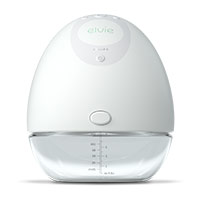
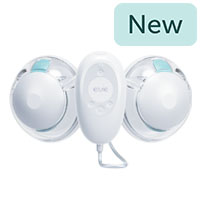
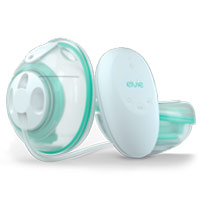
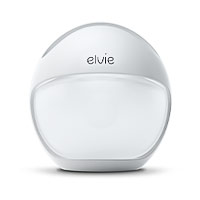
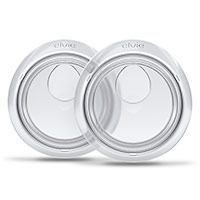
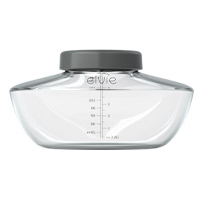
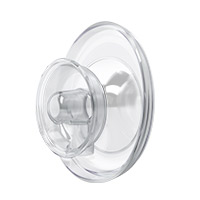

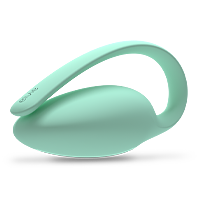
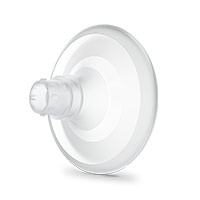
 12 minute read
12 minute read